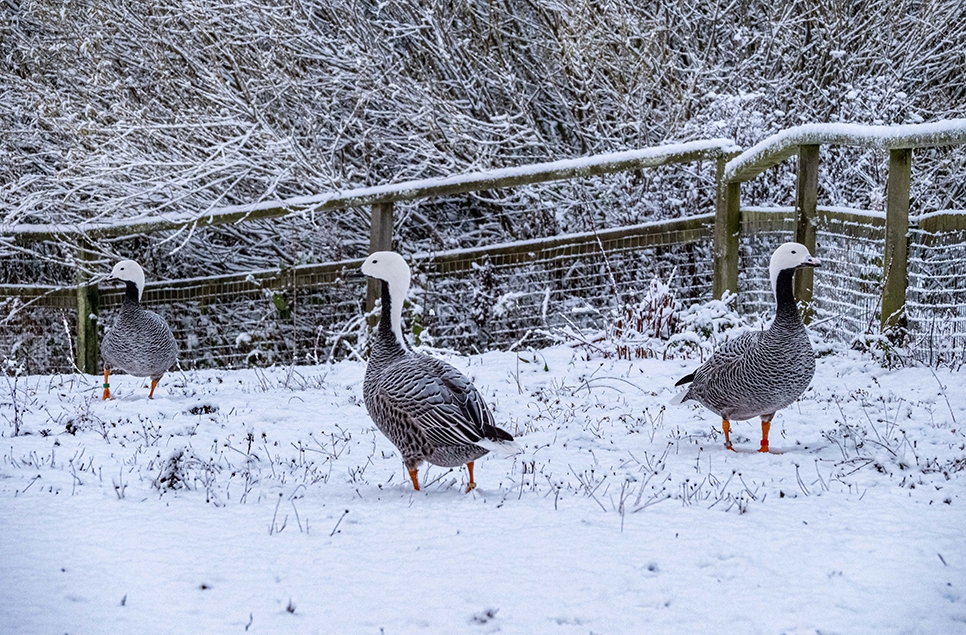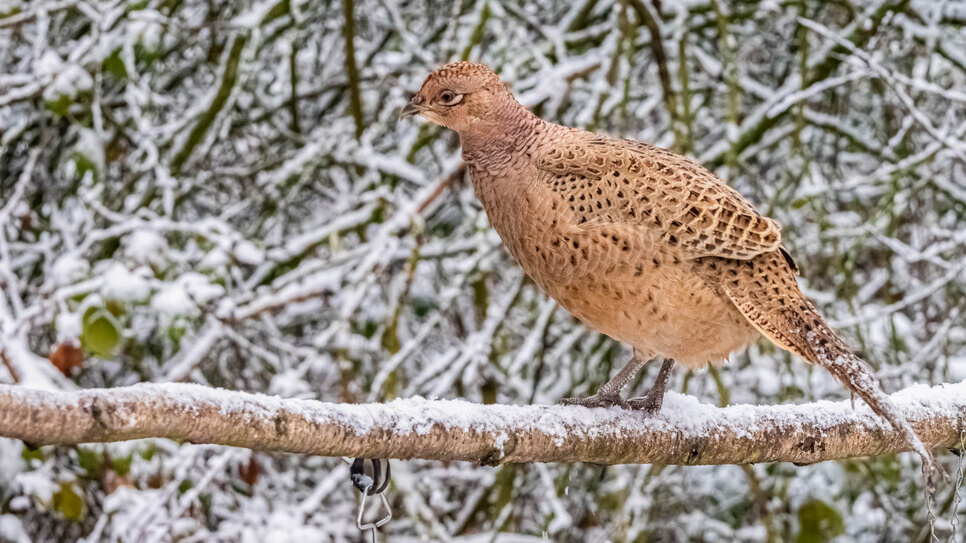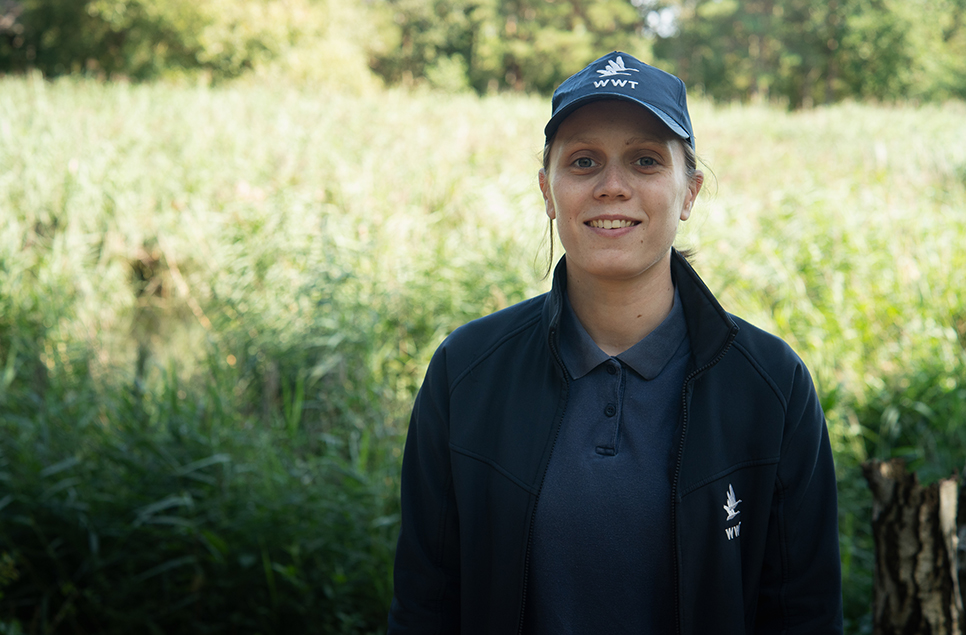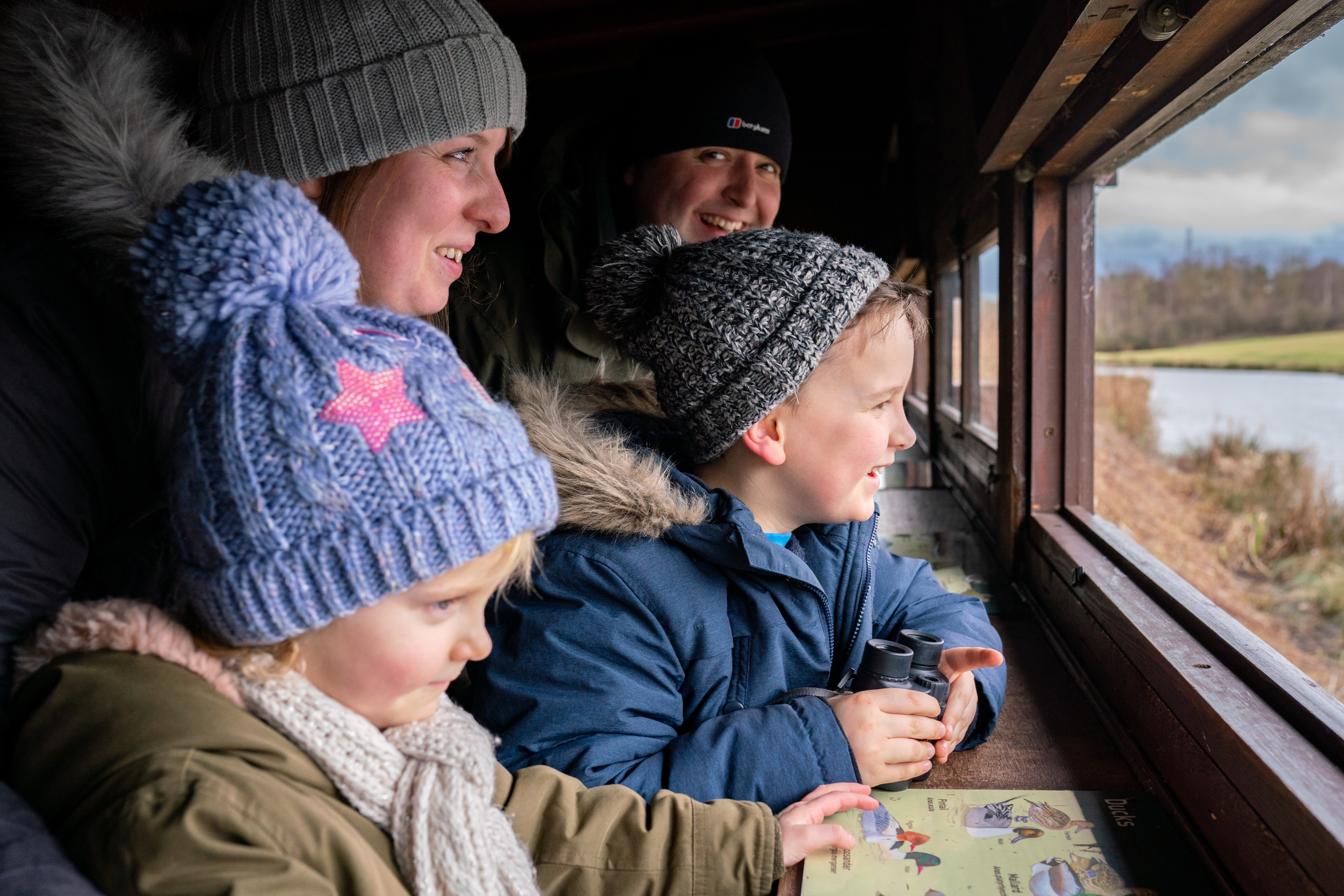Reedbeds - Drawn to Water top tips
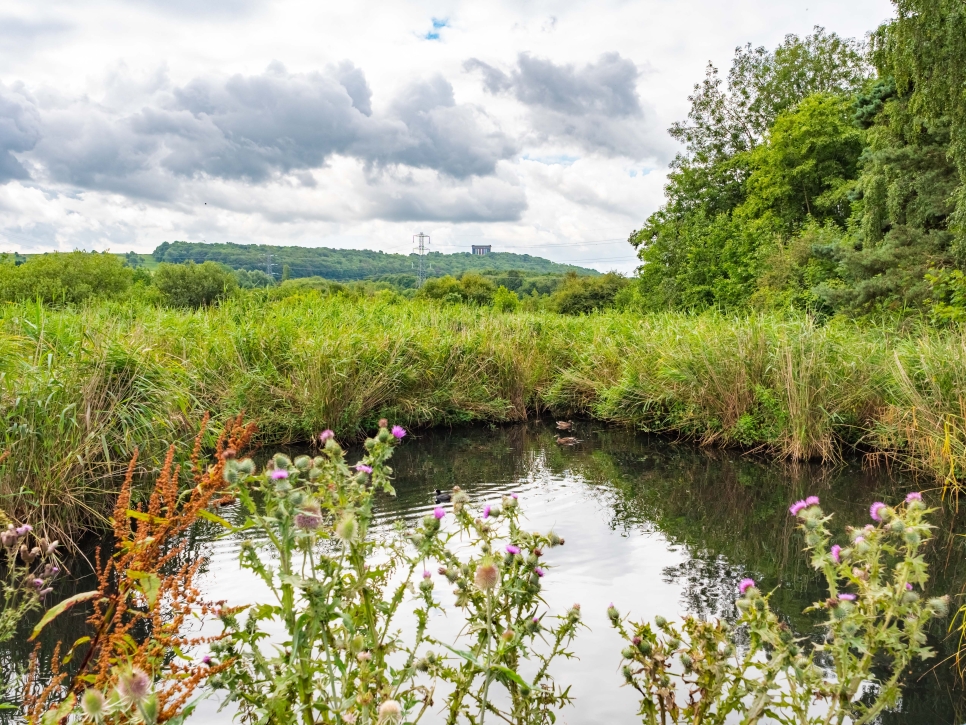
Our Drawn to Water guide is a great way to highlight key areas of our collection and wild reserve that are often overlooked. With many spots to stop, look and listen; you'll find there's so much more to most places than first meets the eye (and ear!). It's all about pausing and taking a while to enjoy the incredible nature that surrounds you from the start of each and every visit to Washington Wetland Centre.
Reedbeds are arguably the most secretive habitat you’ll discover on a wander around our wetlands.
They support bird life, mammals and insects aplenty, but a bit of patience is sometimes needed to discover what’s hiding within their waterlogged world.
We have a number of reedbeds on site and the Drawn to Water trail guide leads you from the colour and noise of Close Encounters along the pathway to the relative peace of our filter reedbed, at the edges of Hollowood.
Here, you’ll be met with fantastic views of the well-established reeds stretching out across the water to be met by a backdrop of vast sky, rolling green hills and one of the area’s most iconic landmarks dotted on the horizon: Penshaw Monument.
Stop and glance to your left. Through the trees, you’ll notice a tall wooden building on legs. This was once a security tower, allowing staff to see right across the site as far as Spring Gill, Wader Lake, the River Wear corridor, the saline lagoon and Hawthorn Wood. This was before our trees grew up around it, of course!
Nowadays, the structure is condemned but has been left in place to provide a welcome home for bats, squirrels, kestrels and whatever other animal life takes a fancy to it.
3 ways to slow down your experience
LISTEN - within the reeds themselves lives an abundance of wildlife and when it comes to birds, you’re more likely to hear the ones that take up residence here than see them.
Pause a moment and listen out for the various songs. Can you pick out the rhythmic raspy, chugging of the reed warbler coming from deep within the plants? Or do you detect the sound of a sedge warbler (below) – sitting high up on top of the reeds – loudly emitting its erratic scratches and whistles?
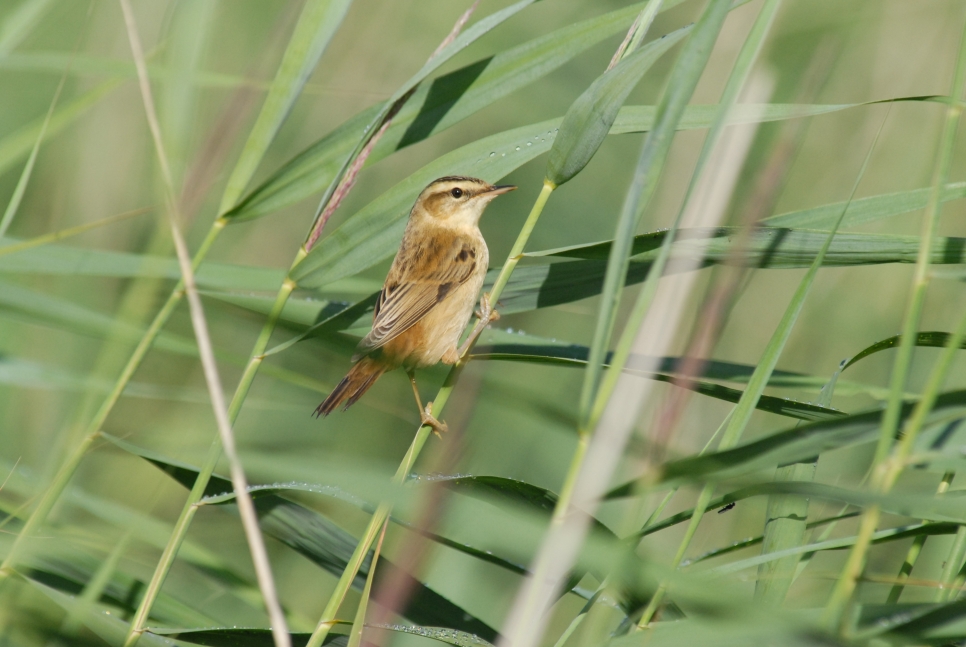
WATCH - swallows and swifts skim the tops of these statuesque plants searching for insects. Scan their swaying tops. Can you see them weaving in and out?
Or look down towards the bottom of the reedbed. Can you spot a young moorhen or coot family (below) emerging to feed or a mallard dabbling and up ending in the water?
Reedbeds also support a wide variety of mammals, with drier areas providing burrowing habitat for voles, water shrews and harvest mice.
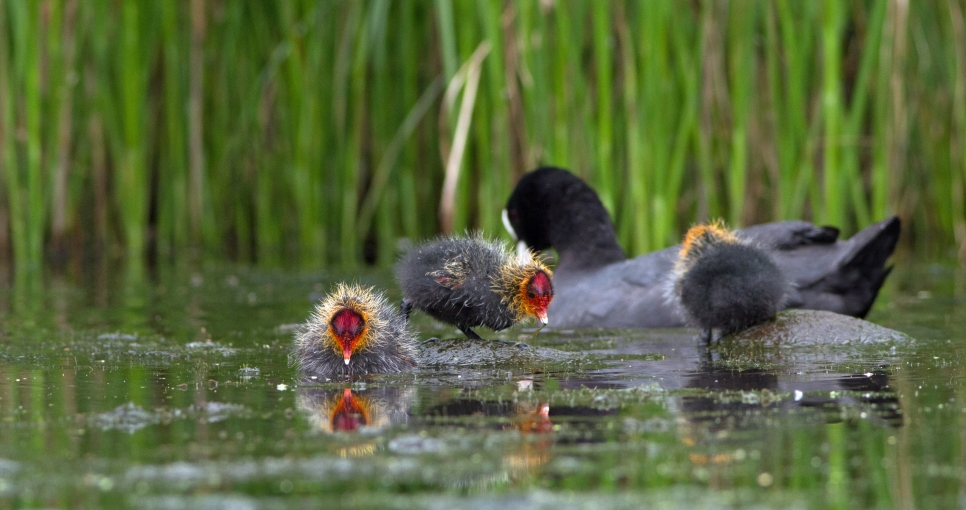
‘BE’ - stand at the reedbed on a rainy day and feel the heightened sensation of raindrops splashing your skin, while you soak in the vast sense of space around you. Move under the cover of the nearby shelter (below) and listen to the soothing rhythm of the drops falling, while taking deep lungfuls of the fresh, cool air. Breathe. Relax. Be.
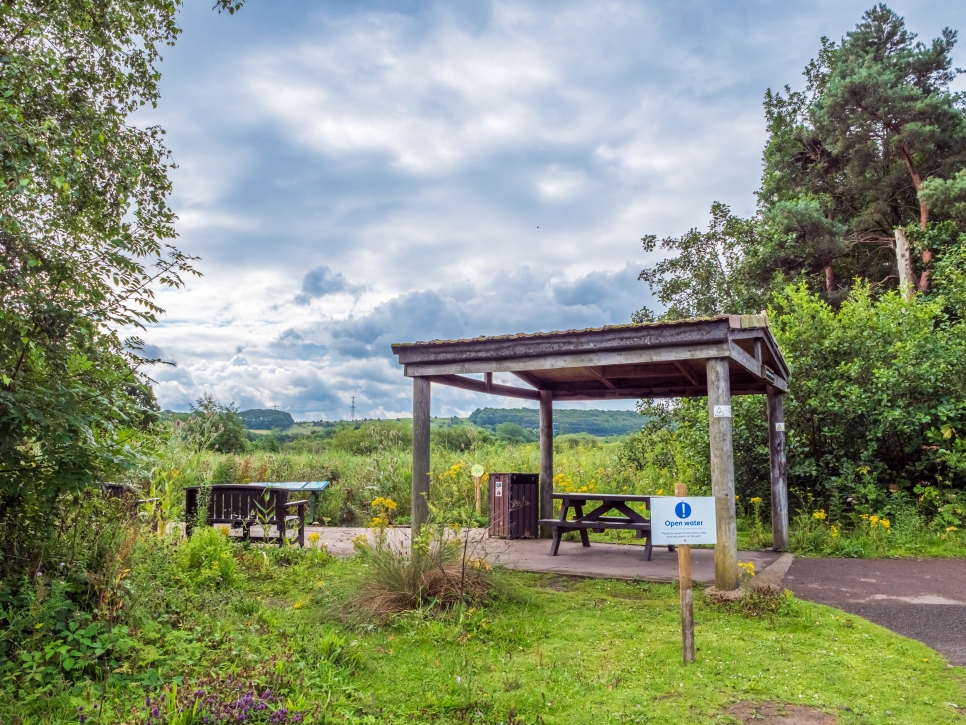
Did you know?
More than 40% of England’s reedbeds have been lost since 1945 and they’re still declining rapidly.
From the 17th Century onwards, large-scale drainage schemes meant extensive areas of reedbed were converted to agricultural land. Pollution from agricultural run-off and urban development continues to threaten existing sites.
There are about 900 reedbeds in the UK, but only 50 are big enough to support bitterns, which need at least 20 hectares for a viable population.
Coastal reedbeds are under threat from sea-level rise due to climate change.
However, in recent years the development of new markets for biofuel and compost and support for the reed-cutting industry has seen the rejuvenation of existing reedbeds.
What is WWT doing to protect reedbeds?
Reedbeds are a priority habitat for nature conservation in the UK and WWT is working hard to restore and maintain these vital spaces for wildlife.
Our ambition is to secure their future and inspire everyone to value these amazing places and what they can do for people and nature.
Ready to visit?
If you've been inspired to explore Washington Wetland Centre and use our Drawn to Water trail guide to lead you around, find out more and plan your visit online.
